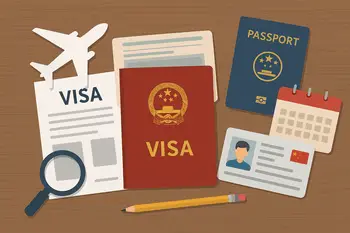
Navigating public transportation in a new country can be daunting, but with the right information, it becomes much easier.
China boasts one of the most extensive and efficient public transportation networks in the world, covering everything from high-speed trains to local buses and metros.
This guide will help you understand public transport schedules in China, ensuring you can travel with ease.
Why Use Public Transport in China?
Using public transport in China offers numerous benefits:
- Cost-Effective: Public transport is significantly cheaper than taxis or private car hire. For example, a metro ride in Beijing costs as little as ¥3, while taxis start at ¥13.
- Efficient: With extensive networks and frequent services, public transport is a quick and reliable way to get around.
- Eco-Friendly: Public transport reduces your carbon footprint compared to private vehicles.
- Convenient: It provides access to a wide range of destinations without the hassle of parking or navigating traffic.
Types of Public Transport in China
1. Metro Systems
Most major cities in China, such as Beijing, Shanghai, Guangzhou, and Shenzhen, have efficient metro systems. These systems are known for their punctuality, cleanliness, and extensive coverage.
- Schedules: Metro services generally start around 5:30 AM and end around 11:30 PM. Peak hours are typically from 7:30 AM to 9:30 AM and 5:00 PM to 7:30 PM.
- Frequency: During peak hours, trains run every 2-3 minutes. Off-peak times see trains every 5-10 minutes.
- Apps and Maps: Use apps like MetroMan or Explore Metro for real-time updates, maps, and route planning.
- Accessibility: Most metro stations are equipped with elevators and ramps for wheelchair users, though some older stations may have limited accessibility.
2. Buses
Buses are a ubiquitous and affordable mode of transport in China, serving urban, suburban, and rural areas.
- Schedules: Urban buses generally run from 5:00 AM to 10:30 PM. Some cities offer night buses that operate until early morning.
- Frequency: Main routes in cities may have buses every 5-10 minutes, while less frequent routes may run every 20-30 minutes.
- Apps and Websites: Use Baidu Maps or the city’s official transport website for real-time bus schedules and route information.
- Challenges: Bus schedules and stop announcements are often in Chinese, so basic Mandarin knowledge or a translation app can be helpful.
3. High-Speed Trains
China’s high-speed rail network is one of the largest and fastest in the world, connecting major cities across the country.
- Schedules: High-speed trains operate from early morning until late evening. For example, trains between Beijing and Shanghai start around 6:00 AM, with the last train departing around 10:00 PM.
- Frequency: Popular routes, such as Beijing to Shanghai, have trains departing every 15-30 minutes. Less busy routes may have fewer trains per day.
- Booking and Timetables: Use platforms like Ctrip, 12306.cn, or China Highlights to check schedules, book tickets, and get updates.
- Tips: Book tickets in advance, especially during holidays like Chinese New Year or Golden Week, as trains fill up quickly.
4. Taxis and Ride-Hailing Services
Taxis and ride-hailing services like Didi Chuxing are widely available in Chinese cities.
- Availability: Taxis are available 24/7, but it may be harder to find one during peak hours or late at night.
- Apps: Didi Chuxing is the most popular ride-hailing app, offering options like Express, Premier, and Luxe. The app has an English version for non-Chinese speakers.
- Challenges: Some taxi drivers may not speak English, so having your destination written in Chinese or using the app’s translation feature is helpful.
5. Bikes and Electric Scooters
Bike-sharing and electric scooter rentals are popular for short distances and last-mile connectivity.
- Availability: Available 24/7 in most cities.
- Apps: Use apps like Meituan or Didi Qingju for electric scooters, and Mobike for bike-sharing services.
- Tips: Ensure you have a Chinese phone number and a payment method like WeChat Pay or Alipay to unlock bikes or scooters.
Tips for Navigating Public Transport Schedules
1. Plan Ahead:
- Use apps like Baidu Maps, MetroMan, or 12306.cn to check schedules and plan your route in advance. This helps avoid unnecessary waiting times and ensures you make timely connections.
2. Learn Basic Mandarin:
- While many apps and transport systems have English options, knowing basic Mandarin phrases like “Where is the metro station?” (地铁站在哪里? – dì tiě zhàn zài nǎ lǐ?) can help you navigate more easily.
3. Avoid Peak Hours:
- Peak hours (7:30 AM – 9:30 AM and 5:00 PM – 7:30 PM) can be extremely crowded. If possible, travel during off-peak times for a more comfortable journey.
4. Purchase Travel Cards:
- Get a travel card like the Beijing Yikatong or Shanghai Public Transportation Card for seamless travel across metros, buses, and even some taxis. These cards can be topped up at metro stations or convenience stores.
5. Book Train Tickets in Advance:
- High-speed train tickets can sell out quickly, especially during holidays. Use platforms like 12306.cn or Ctrip to book tickets as early as possible.
6. Stay Updated:
- Follow local news or app updates for any schedule changes, maintenance work, or delays. Apps like Baidu Maps often provide real-time updates.
7. Safety Tips:
- Keep an eye on your belongings, especially during crowded times.
- Follow local safety guidelines, such as standing behind the yellow line on metro platforms.
Challenges and How to Overcome Them
- Language Barriers: While many apps and metro systems have English options, buses and rural transport often do not. Use translation apps like Google Translate or Pleco to bridge the gap.
- Payment Methods: Many transport services require digital payment methods like WeChat Pay or Alipay. If you don’t have a Chinese bank account, consider using international cards linked to these apps.
- Crowds: Public transport can be extremely crowded during peak hours or holidays. Plan your travel accordingly and be patient.
Conclusion
Understanding public transport schedules in China can greatly enhance your travel experience, making it easier to navigate cities and explore the country.
With efficient metro systems, extensive bus networks, high-speed trains, and convenient bike-sharing services, you have multiple options to choose from.
By planning ahead, using the right apps, and staying informed, you can make the most of China’s public transport and enjoy your journey. For more information, check out the following resources:
Safe travels!


